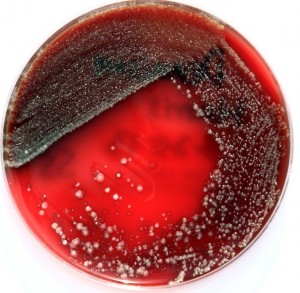Continuing Education
Have you ever wanted to streak?
Bryan will visit your office and teach you proper streaking and inoculation techniques. Graduates will receive a nifty diploma.
Don’t underestimate how well this will look on your resume!
Streaking is the technique used obtain isolated colonies. Sterile cotton or Dacron swabs are used to take samples from the patient throat or other site. The swab is then used to inoculate a small portion (1/4) of the microbial medium (such as a blood agar plate). The swab is rolled over a portion of the medium to bring all sides of the swab into contact with the plate surface.
The section which is first inoculated will contain many bacteria too close together to be able to select a single colony. However, by using a sterile wire or plastic needle and dragging it across the previously inoculated quadrant, only some of the original sample is introduced to new sections of the plate. This process is repeated on new sections of the agar plate surface.
Each time the needle gathers fewer and fewer bacteria until isolated cells are left on the surface of the medium. With a urine specimen, a tiny sterile loop is used instead of a needle. These loops are calibrated to be a certain size and deliver a specific amount of urine so a colony count can be done to determine how many organisms there are per milliliter of urine. This gives the clinician an idea of how serious the urine infection is.
The medium is then incubated at 37 degrees centigrade. The few isolated cells grow into isolated colonies which are used for to identification and antimicrobial sensitivity testing if the isolates are determined to be pathogens.

Example of isolated colonies obtained from throat culture. Isolated colonies can then be selected and tested.

